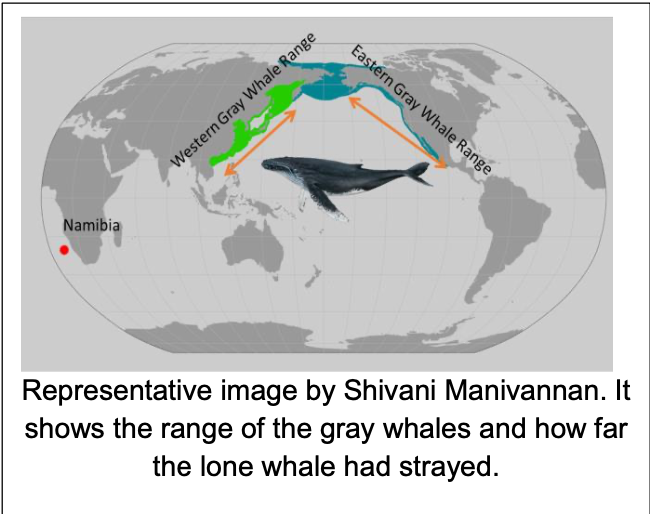News report by Shuchi Giridhar.
Cape Town (South Africa) June 13: A 40-foot gray whale was spotted off the coast of Walvis Bay in Namibia, Africa, in 2013. This was the first recorded event of a gray whale sighting in the southern hemisphere and it piqued the interest of scientists all over the world. A research team was able to obtain a small tissue sample from the whale for further study and analysis.
Gray whales (Eschrichtius robustus) are well- known to be endemic (common in a certain area or native) to the North Pacific Ocean. They exist in two geographically distinct populations. The ‘eastern’ gray whales migrate between the Bering and Chukchi Seas in the summer to Baja California, Mexico in the winter. The ‘western’ gray whales migrate between the Sea of Okhotsk in the summer and the South China Sea in the winter. There are approximately 20,000 ‘eastern’ whales found, compared to only 200 ‘western’ whales, which are at high risk of extinction due to commercial whaling.
The researchers from South Africa’s Sea Search Research and Conservation NPC, who collected the tissue sample from the lone whale, collaborated with scientists from Durham University in England to determine to which group this lone gray whale belonged to.
They sequenced the whale’s DNA from a tissue sample and performed a full genetic analysis on the sample. They compared genetic data with whale data from various biological databases. The findings, which were was published in the journal Biology Letters, revealed that the gray whale swimming in Walvis Bay belongs to the group of western gray whales. It had strayed from its usual migration route. Whatever route it took to get to Nambia, this gray whale has covered around 27000 km, which is halfway around the world, and a record for any mammal. It is still not clear why the whale strayed away from its migration path.


